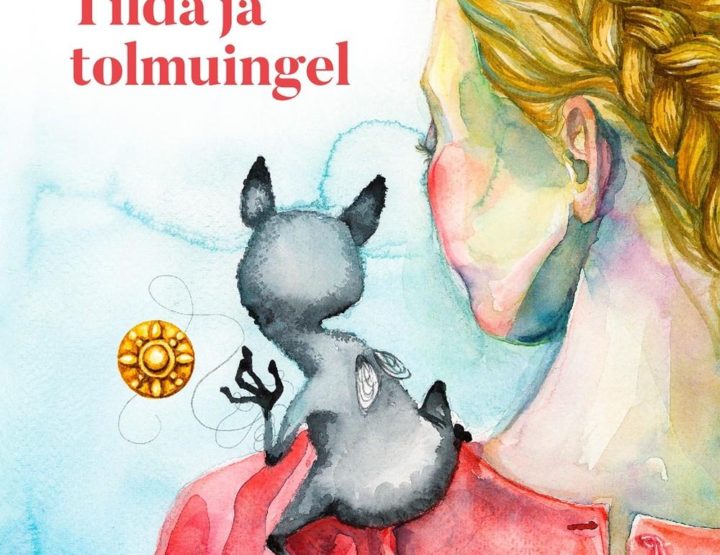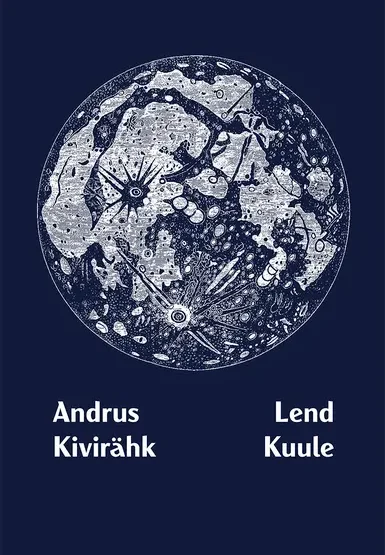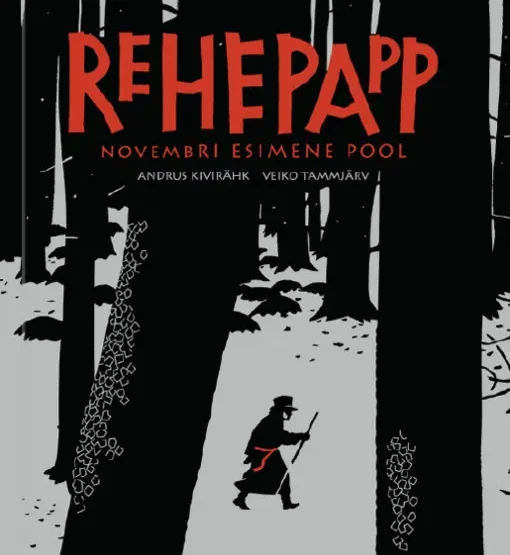As an editor, you never know when you are going to find an interesting writer. Of course, manuscripts usually come from literary agents, but there are those wonderful times where you independently come across something that intrigues you, and end up publishing it.
“This is the story of the last man who spoke the snake language; of his sister who fell in love with a bear; of his mother who had a compulsion for roasting elk; of his grandfather who went to war despite having no legs; of his uncle whom he loved very much; of a young girl who believed in love; of a sage who wasn’t as wise as he seemed; of a peasant woman who dreamed of a werewolf; of an old man who pursued winds; of a salamander who flew in the air; of Australopitheci who raised giant lice; of a titanic fish from a faraway world; and of Teutonic knights who were a little horrified by all of the above.” I read the above words in a bookshop in Bordeaux, struggling with some of the more taxing French vocabulary but understanding enough to realize that this book was something very unusual indeed. I could tell
that just from the cover, a beautiful illustration of a giant winged fish, and the title: L’homme qui savait la langue des serpents.
Next to the plain white books beside it (the simple design favored by many French publishers) the book stood out all the more.
What was this novel, by a well-regarded Estonian writer, that spoke of bear-love, giant lice and werewolves? Intrigued, I took a photo on my phone and left the bookshop. This was August 2013, and I was on my honeymoon. My husband and I were visiting southwest France on a much-too-short tour, enjoying great meals and good wine in various places in the Dordogne, Cahors, Armagnac, and, finally, Bordeaux, where I’d decided to pop into a beautiful independent bookstore, “La Machine à Lire”. (An appropriate epithet for the kind of
person who goes into a bookstore on their honeymoon, as it happens.)
My second encounter with the book, the one that proved to be decisive, was second-hand. Morgan Entrekin, the publisher of Grove Atlantic, has built a reputation on publishing literary fiction and serious nonfiction by talented writers from America and all around the world. Many of the non-American writers that come to his attention are recommended by his editor and agent friends from Europe and beyond. These are relationships that go back decades, built on a knowledge of each other’s taste and on reciprocity: Morgan is equally happy to hear about an intriguing foreign language book from another publisher as he is to tell them about his own American writer that they might want to acquire.
Morgan heard about Kivirähk’s novel from a Dutch publisher friend, Job Lisman of Prometheus, while at the Frankfurt Book Fair, which he attends each year. Job told Morgan that he had just acquired the Dutch rights to a book set in a fantastical version of medieval Estonia. Just from the title, The Man Who Spoke Snakish, Morgan was intrigued. He called me and asked me to look into the book, which I remembered from the bookshop in Bordeaux. I wrote to the French publisher to find out more information. As it happened, it was this publisher,
Frédéric Martin, of the small press Éditions Attila (since split into Le Nouvel Attila and Le Tripode, the latter of which Martin runs),
who controlled the rights. He sent along a PDF, as well as a review from Le Monde, “in my opinion the most accurate one about the
book”. I started reading, mustering up my rusty French, and occasionally turning to the dictionary for help with some unusual
words: “élan—elk”; “siffler—to hiss”; “la soupe d’orge—barley gruel.”
As an editor I look for many things when reading a book, but perhaps the most immediately critical is “voice”. It’s something
that’s hard to pin down, but you know it when you read it – a narration that feels fully formed, a focalizer that gives the text
color and shape, a freshness of style. For my taste at least, this novel had voice in spades.
And the characters and setting were so intriguing! Young Leemet is a pagan boy living in the forests of Estonia in the twelfth century, just after the invasion of the country by the Teutons, who set about converting the Estonian people to Christianity. Banished from the village (a Teuton innovation) after his mother sleeps with a bear who kills his father (in the novel, bears are quite the lotharios), Leemet grows up in the forest, living a hunter-gatherer lifestyle with his mother and sister, and going on adventures with his friends.
Leemet and his forest-dwelling peers are aided in their hunting by a unique skill: the ability to speak the language of Snakish, which gives them power to control animals. When an animal hears a correctly spoken Snakish word, it is forced to give itself over to be killed. But the people who have moved to the villages to become peasants, tilling fields under what we know as the feudal system, have forgotten the Snakish words. The language is dying out. The village way of life frightens Leemet, and also makes no sense to him: why toil in fields and struggle to hunt when you can just learn Snakish and eat your fill of meat? Thanks to a young viper called Ints whom he meets and befriends, Leemet begins to truly master Snakish, and is thrown onto a path where he will become the sole defender of an entire ancient way of life.
The novel is many things at once, but at its heart it is perhaps a Bildungsroman of a boy whose Bildung ends up being useless when
the society around him changes so dramatically it leaves him completely behind. In this way, it’s a book about war, violence, and
occupation, as well as magic and tradition. But although there is much in the novel that explores ideas about modernity and existential
questions of change, the book surprises with its tone of lightheartedness, of humor.
Some of this comes from the ridiculous things that Leemet witnesses, and from his lack of understanding of then-modern human ways—for one thing, he is deeply fearful that if he tries to eat the evil substance known as “bread” he will die. Some minor characters serve as subjects of satire, including the falsely pious Ülgas, Sage of the Wood, who pretends to see and hear sprites and fairies in order to cement his position at the heart of the forest’s social order. I was at times reminded a little of Terry Pratchett and Neil Gaiman, but the humor of the
book is quite unique. You never feel you are reading a “straight” fantasy or historical novel—there is a tongue-in-cheek tone maintained at a low level throughout—but the novel is nonetheless neither a postmodern game of style, nor a parody.
It seems that the main impetus for Kivirähk’s humor is to satirize the way that Estonian nationalists have idealized this prehistoric period in Estonia’s history, imagining that there could have been El Dorado-esque wonders that were wiped out by the conquering Germans. Kivirähk, who, it is clear, has little patience for noble myths dressed up for political ends, paints a much more bawdy and fanciful portrait of the same period, while retaining a deep fascination for these historical times and the connection with the land that has now been lost. The book, by turns humorous, rollicking, and tragic (a mix that is not exactly simple, and not for every reader), reveals itself to be a profound and deeply unusual depiction of an ancient world.
*
When Morgan was back from the Frankfurt Book Fair, and I’d had a chance to finish the manuscript, we discussed the book, and I told him that I’d been intrigued by it months before, when I saw it in a bookshop in Bordeaux. Somehow the book felt fated to be published by us. We were both very keen to acquire it, even though at almost 500 pages, the translation cost would be quite significant. But despite the challenges, we made Frédéric Martin an offer for World English rights, and he accepted. In an email he wrote to me: “As Humphrey said by
the end of Casablanca: I believe this is the beginning of a long friendship.” Having acquired the rights, the next step was to find a good translator. Grove Atlantic publishes quite a large number of books in translation, and we have good relationships with many established and newer translators, but we had never before published a book translated from Estonian. I commissioned samples from a number of translators. All of the translations were strong, and had different approaches to and renditions of the text, but it was Christopher Moseley’s
that I felt most drawn to—it seemed to feel the most similar to the text I had read in French, and, more importantly, the English felt writerly, the tone well-maintained. Christopher, a Baltic Studies professor at University College London, had already read the book when translating a chapter for an online literary publication, and had been in touch with the author. This was Christopher’s first book-length translation
into English and I hope I’ll have the chance to work with him again.
A few months passed, and the translation arrived. It was just what I had hoped it would be. A healthy line-edit changed some phrasing for an American audience and altered syntax and word-choice in order to help the translation sound smooth and natural in English, while retaining the tone and the various oddities of the original. Christopher was a joy to deal with throughout, and kept Kivirähk in the loop. In the meantime, I wrote descriptive copy that I hoped would be as enticing as the description on the French edition that had intrigued me in the Bordeaux bookshop.
The initial reaction from my colleagues was very positive – many of our sales team fell in love with the novel, and Morgan and others who were now able to read the book in English were charmed and impressed. We had good initial orders from bookstores, including a positive response from Barnes & Noble, orders from the airport bookstores, and a lot of early buzz from the independent stores, which are always absolutely key to all of the fiction we publish, and particularly so for our books in translation.
The book came out in November 2015, and early reviews have been strong. The book was featured in Entertainment Weekly’s Fall Fiction Preview, calling it a “translated Estonian treasure”; it was later reviewed by the same publication. Quite a feat for a book in translation! Excellent pieces in the New York Journal of Books, Toronto Star, Full Stop and other publications followed. We reprinted just a week after publication and will have to reprint again soon. It’s very heartening to see how the book is reaching an audience here. We will publish an edition in the United Kingdom in September of this year, and hope for much more to come for this wonderful novel.
It’s been fantastic to see this book reach thousands of English-language readers. An Estonian novel discovered by a French publisher, now reaching an audience in America: perhaps this represents all of the best things about globalization. The team at Grove and I are delighted to
give Leemet a chance to tell his story to English language readers around the world. He may be the last speaker of a dying language,
but at least we can all hear what he has to say.
Peter Blackstock is the Associate Editor of Grove Atlantic in New York City, and has a special interest in translated literature.





